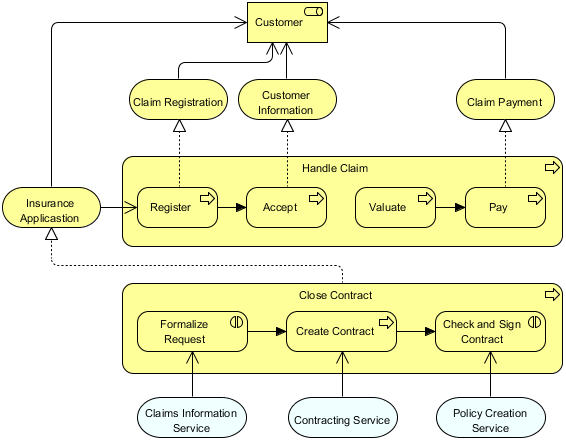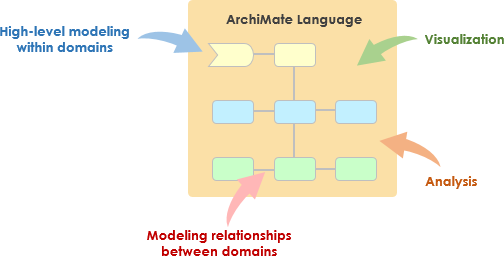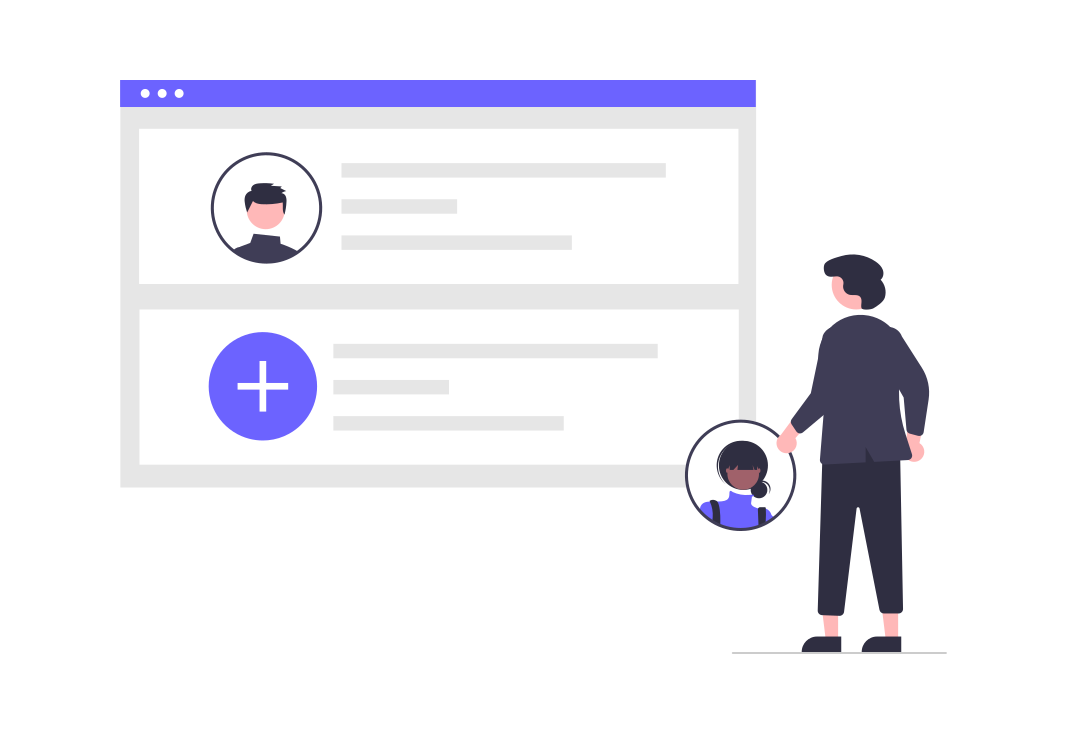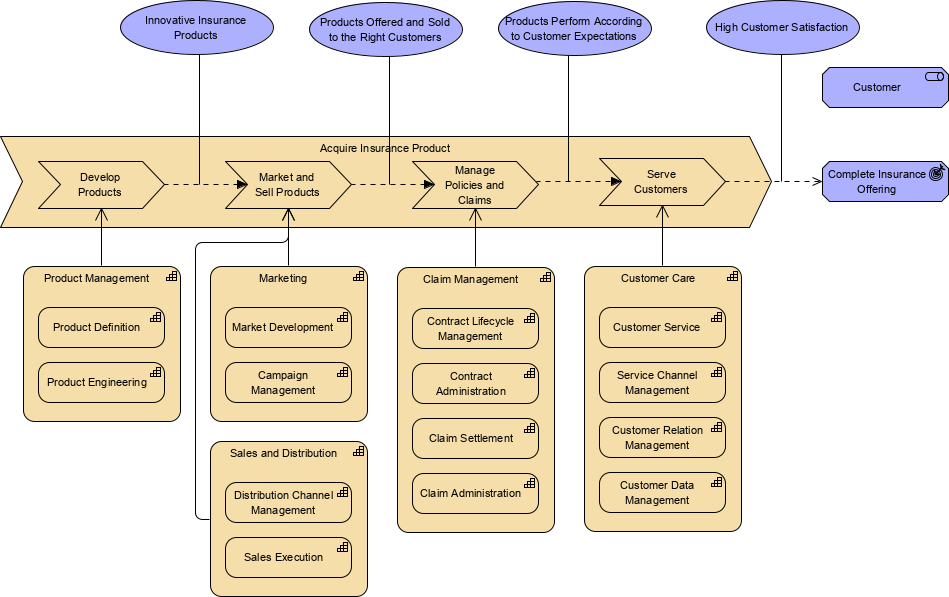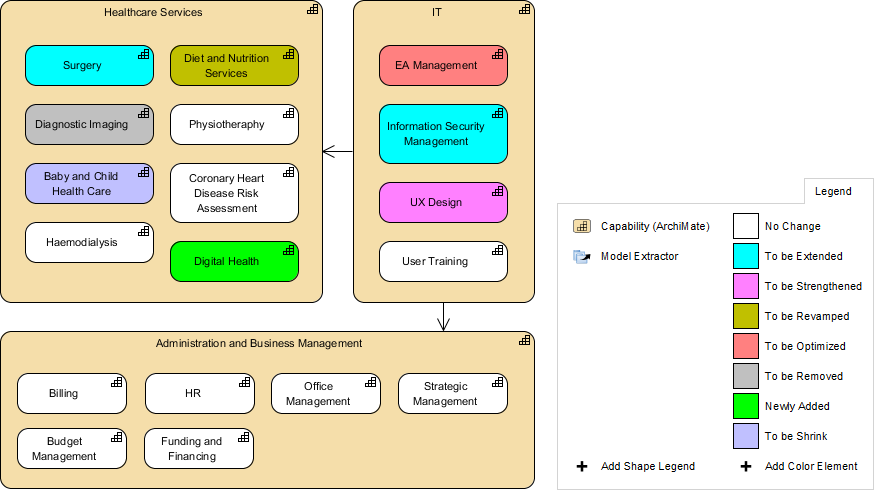Home » ArchiMate Viewpoint
Introduction ArchiMate viewpoints are a critical concept within the ArchiMate modeling language, which is designed to help organizations describe, analyze, and visualize their enterprise architecture. Viewpoints in ArchiMate provide a way to focus on specific aspects or concerns of the architecture, making it easier to communicate complex information to different stakeholders. Here's a more detailed explanation of ArchiMate viewpoints and how to use them: What Are ArchiMate Viewpoints? ArchiMate viewpoints are essentially predefined perspectives or templates for creating architectural models. Each viewpoint is tailored to address specific concerns, interests, or goals of different…
continue reading →
Introduction ArchiMate is an enterprise architecture modeling language that serves the purpose of describing, analyzing, and visualizing architecture within and across business domains in a clear and unambiguous manner. It is an open and independent standard, governed by The Open Group, and it has gained wide acceptance in the field of enterprise architecture. Key Points about ArchiMate: Scope and Focus: ArchiMate distinguishes itself from other modeling languages, such as UML and BPMN, by its specific focus on enterprise architecture. While UML and BPMN have broader applications, ArchiMate is designed to model the architecture…
continue reading →
Introduction In today's fast-paced business environment, enterprises are constantly seeking ways to align their IT strategies with their overall business goals. The Open Group Architecture Framework (TOGAF) provides a comprehensive approach for achieving this alignment, and ArchiMate, an open and independent modeling language, offers a powerful tool to visualize and communicate complex architectural concepts. In this article, we will explore how ArchiMate can be seamlessly integrated into TOGAF's Architecture Development Method (ADM) to enhance architectural practices and facilitate effective communication across all levels of an organization. Understanding TOGAF ADM The TOGAF ADM is…
continue reading →
TOGAF ADM Overview The TOGAF ADM is a foundational component of the TOGAF Standard, a time-tested and reliable framework that has been successfully employed by numerous enterprises over the years. Its primary objective is to guide the creation of an Enterprise Architecture that not only supports but also drives the realization of an organization's vision and requirements. TOGAF 10, the latest version, provides comprehensive guidance on developing enterprise architecture that facilitates effective change. What is the TOGAF ADM? The TOGAF ADM represents a logical, systematic approach to acquiring knowledge necessary for enterprise architecture…
continue reading →
What is Location Catalog in TOGAF ADM The Location Catalog is a database that contains a list of all the places where a company operates or has architecturally significant assets such as data centers and end-user computing equipment. It helps in identifying the scope of a project and assesses the current landscapes or target solutions. For instance, if a project aims to upgrade desktop operating systems, the location catalog will help in identifying all the places where such systems are deployed. Additionally, when new systems are being implemented, a diagram of locations is…
continue reading →
The Business Service/Function Catalog is a document that provides a functional decomposition of an organization's services and functions in a form that can be filtered, reported on, and queried. This catalog serves as a supplementary tool to graphical Functional Decomposition diagrams and can be used to identify the capabilities of an organization, determine the scope of change initiatives, and understand the level of governance applied to its functions. The Business Service/Function Catalog contains metamodel entities such as Organization Unit, Business Function, Business Service, and Application Service. The Business Service/Function catalog is a document…
continue reading →
In today's digital age, securing sensitive information is a top priority for organizations. With multiple applications and departments within an enterprise, it can be challenging to manage and define authorization levels consistently. This is where the Role Catalog comes in, providing a centralized tool for defining and organizing authorization levels or zones within an enterprise. What is a Role Catalog in TOGAF ADM The Role catalog is a tool used in enterprise security to define and organize authorization levels or zones within an organization. The purpose of the Role catalog is to provide…
continue reading →
The Organization/Actor catalog is a critical component of the TOGAF Architecture Development Method (ADM). It is used to capture a definitive listing of all participants that interact with IT, including users and owners of IT systems. This catalog plays a crucial role in developing requirements that test for completeness and ensuring that all necessary actors and organizations are identified and their requirements are taken into account during the development of an enterprise architecture. In this way, the Organization/Actor catalog helps to identify the key actors and organizations involved in an IT system and…
continue reading →
Value stream mapping (VSM) is a visual tool used to analyze and improve the flow of materials and information required to bring a product or service to customers. It is a critical component of lean manufacturing and continuous improvement methodologies. The process involves mapping the entire value stream, from raw materials to the finished product, and identifying areas of waste, inefficiency, and bottlenecks that can be targeted for improvement. By reducing waste and improving flow, value stream mapping can help organizations increase efficiency, reduce lead times, and improve customer satisfaction. Key Concepts of…
continue reading →
In TOGAF (The Open Group Architecture Framework), a capability map is a tool used to organize and categorize the various capabilities of an organization. A capability is defined as the ability of an organization to perform a specific activity or function. The capability map is typically structured as a hierarchical diagram or matrix, and it provides a high-level view of the organization's capabilities, organized by business function or domain. The map can be used to identify areas of strength and weakness, as well as to prioritize improvement initiatives. The capability map is an…
continue reading →

